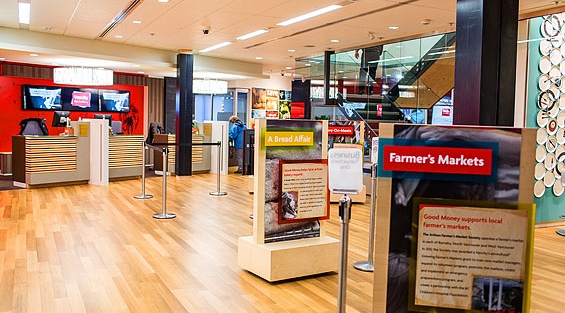Are You My Prototype?

By Michael Downs, Momentum
Credit unions of all sizes are taking a hard look at their retail branch networks and trying to make decisions on how branches can be better leveraged as a delivery channel. As competitors in a multi-channel environment, credit unions are not only evaluating the size and geography of their branch networks, but also the overall operating strategies for integrating them with all other delivery channels.
This increased focus on improving the efficiency and effectiveness of branch networks is being borne out of both necessity and opportunity. Necessity, because many credit unions are finding it difficult to absorb the underperformance of certain legacy branches in a hyper-competitive environment. And, opportunity because many credit unions are recognizing that holistic, well-crafted branch strategies can help them effectively reach new markets.
As a result, there seems to be more discussion in the credit union community about the concept of branch prototypes. And, the top-of-mind examples of retail prototypes are usually Starbucks and Apple. While these higher levels of aspirations for retail branch prototypes are great, credit unions should never forget to ask the question, “Is this the right prototype for who we are and the members we serve”?
Without question, credit unions need to think differently and push themselves in new directions, but at the same time, shouldn’t try to be something they’re not. Not every credit union’s culture can or should be like Apple. And, that’s a good thing. It’s important that credit unions not lose sight of what’s important about a prototype. Certainly consistency of design, brand, messaging, and member experience are critical, but the success of a prototype is also dependent on its alignment with a credit union’s mission and the full adoption by branch staff. Often referred to as, “living the brand”, frontline staff must genuinely believe in the brand and the branch design that supports it. Ultimately, the goal is a prototype that delivers a perfect synergy between the credit union’s operating model, brand values, approach to member service, and its relationship with the community. So, if you’re thinking about a prototype design that includes a “Genius Bar”, but it’s not an authentic expression of your brand values, then don’t do it. Be true to who you are and who you serve.
More importantly, knowing your members and what type of branch experience they want is critical to a successful prototype. In the article, “Engineering the Right Branch Experience”, senior banking advisor David Cavell, discusses failed retail strategies and how the hospitality sector may have more in common with banking. From the article: “Success has also come to many banks through developing a better understanding of the lifestyles, expectations and needs of key target segments. While everyone seems to know that “one size doesn’t fit all” in the world of branch banking, the industry’s response has been spotty and limited”. To Mr. Cavell’s point, retail prototypes are not successful by taking a “me too” approach, such as, “We want our branches to look like Starbucks”. Instead, success is more likely to come from a real understanding of who you are as an organization and expectations of the people you serve.
A great example of success in developing an authentic and community-focused prototype is Vancity Credit Union in Vancouver, Canada. Working with Seattle-based marketing and branding agency, Weber Marketing Group, they developed a branch prototype that reflects the fact that Vancity is a community asset and that turns their branches into community hubs. While they challenged themselves to think differently (a la Apple), every part of their prototype is a genuine reflection of who Vancity is as a community-based organization. The finished product is unique to Vancity and their brand mission.
There’s no denying that some of the “branch of the future” prototype concepts are cool. But, are they the right prototype for your organization and members? And, will they translate to success? When the answer to those questions is “yes”, you’re probably onto something.





